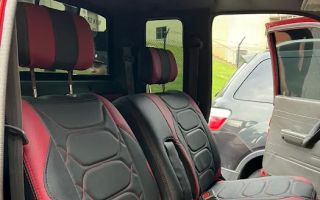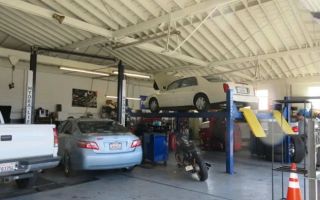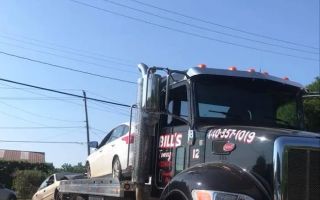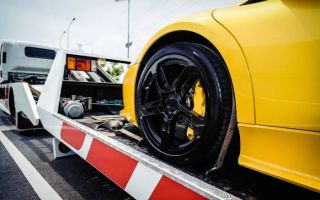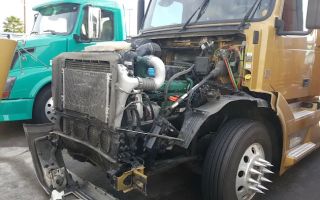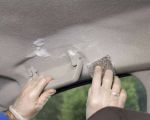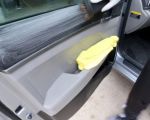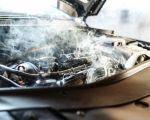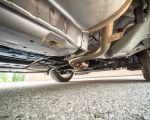- Understanding-Side-Airbag-Deployment
- Immediate-Steps-to-Take-After-Airbags-Deploy
- Common-Reasons-for-Side-Airbag-Activation
- Real-Life-Airbag-Deployment-Examples
- Inspection-and-Repair-Process
- Working-with-Insurance-After-Airbag-Deployment
- When-to-Seek-Professional-Help
Understanding Side Airbag Deployment
Side airbags are designed to protect passengers during lateral collisions, sudden impacts, or rollover events. When they deploy, the force can be loud, startling, and confusing—but their job is to reduce injury. While front airbags are more commonly discussed, side airbags are equally important and can react in milliseconds. Understanding what happens during deployment helps drivers stay calm and respond appropriately.
Most drivers never expect to see their side airbags deploy, so when it does happen, it brings a mix of shock and uncertainty. The immediate aftermath might include smoke-like residue, a strong smell, and inflated or deflated fabric hanging from the seat or door panel. These effects are normal, but they also signal the need for careful next steps.

Costco Gas Station
3705 Hampton Rd, Oceanside, NY 11572, USA
Immediate Steps to Take After Airbags Deploy
If your car's side airbags deploy, safety should be your top priority—both your own and that of any passengers. Here are the essential steps to follow.

Pick Your Part - Help Yourself
1232 Blinn Ave, Wilmington, CA 90744, USA
1. Check for Injuries First
Deployment usually indicates a significant impact. Make sure you and your passengers are safe. Side airbags can reduce injury but may still leave bruises or scrapes.
2. Move to a Safe Location
If the car is still operational and it is safe to do so, move it off the roadway. If not, turn on your hazard lights and wait for assistance.
3. Turn Off the Engine
Airbag deployment can sometimes affect electrical systems. Turning off the engine helps prevent further malfunctions or fire risk.
4. Avoid Touching Deployed Airbags
The material and chemicals released during deployment can be irritating. Avoid rubbing your eyes or touching your face afterward.
Common Reasons for Side Airbag Activation
Side airbags can deploy for several reasons, some more obvious than others. Understanding these causes can help you make sense of what happened.
1. Direct Side Collision
A common trigger is a direct hit on the car’s side—whether from another vehicle, a pole, or a barrier. Even low-speed collisions can activate sensors depending on the angle of impact.
2. Sudden Side Force or Rollover
If the car experiences a sharp tilt or rollover movement, sensors detect the risk and deploy the side airbags instantly.
3. Severe Potholes or Debris Impact
Although rare, hitting very large potholes or road debris has been known to activate airbags if sensors interpret the force as a threat.
4. Sensor or System Malfunction
An older vehicle or one with previous damage may have faulty sensors. In such cases, airbags may deploy unexpectedly, which requires immediate system inspection.
Real-Life Airbag Deployment Examples
One driver from Nevada shared that her side airbags deployed after a pickup truck clipped her rear door while merging. Although the damage appeared minor from the outside, the force was enough to activate the sensors. The airbags prevented her head from hitting the window, saving her from serious injury.
Another case involved a driver on a mountain road in Colorado. His SUV hit a hidden rock, causing one side of the vehicle to sharply jerk upward. Even without a collision, the sudden tilt triggered the side airbags—a clear example of how sensitive and protective these systems can be.
Inspection and Repair Process
After the side airbags deploy, your car cannot simply be “reset.” Airbag systems are designed for one-time use, and the components must be replaced by a certified technician.
1. Damage Assessment
A professional will inspect the sensors, airbag modules, seat wiring, and system control unit. Side airbag deployment often damages seat covers and interior panels, which may need repair or replacement.
2. Airbag Module Replacement
The deployed airbag must be replaced entirely, along with any damaged mounting hardware. This ensures the system will be functional again if another collision occurs.
3. System Reset and Calibration
Technicians use specialized diagnostic tools to reset the airbag control module. Calibration ensures that the sensors communicate properly and no new error codes appear.
4. Additional Interior Restoration
Because side airbags are often integrated into seats and door panels, cosmetic repair may also be necessary. Some drivers choose to upgrade their interior during this process.
Working with Insurance After Airbag Deployment
Most insurance companies cover airbag replacement if deployment occurred due to a collision. The cost of airbag replacement can be significant, so documentation is important.
1. File the Claim Promptly
Provide all details of the event, including photos of the damage and notes about passenger safety.
2. Request a Professional Estimate
Repair shops submit detailed estimates to your insurer, outlining the cost of airbag modules, sensors, and labor.
3. Keep All Receipts and Reports
This ensures smooth reimbursement and serves as proof of repair if you sell the vehicle later.
When to Seek Professional Help
Side airbag deployment is not something a driver can fix alone. If your airbags deploy, your vehicle needs immediate professional evaluation. Attempting to drive without functioning airbags puts you at significant risk.
For assistance in safely transporting your vehicle after airbag deployment, Rescue & Towing offers dependable towing solutions and can direct you to reputable repair facilities.

